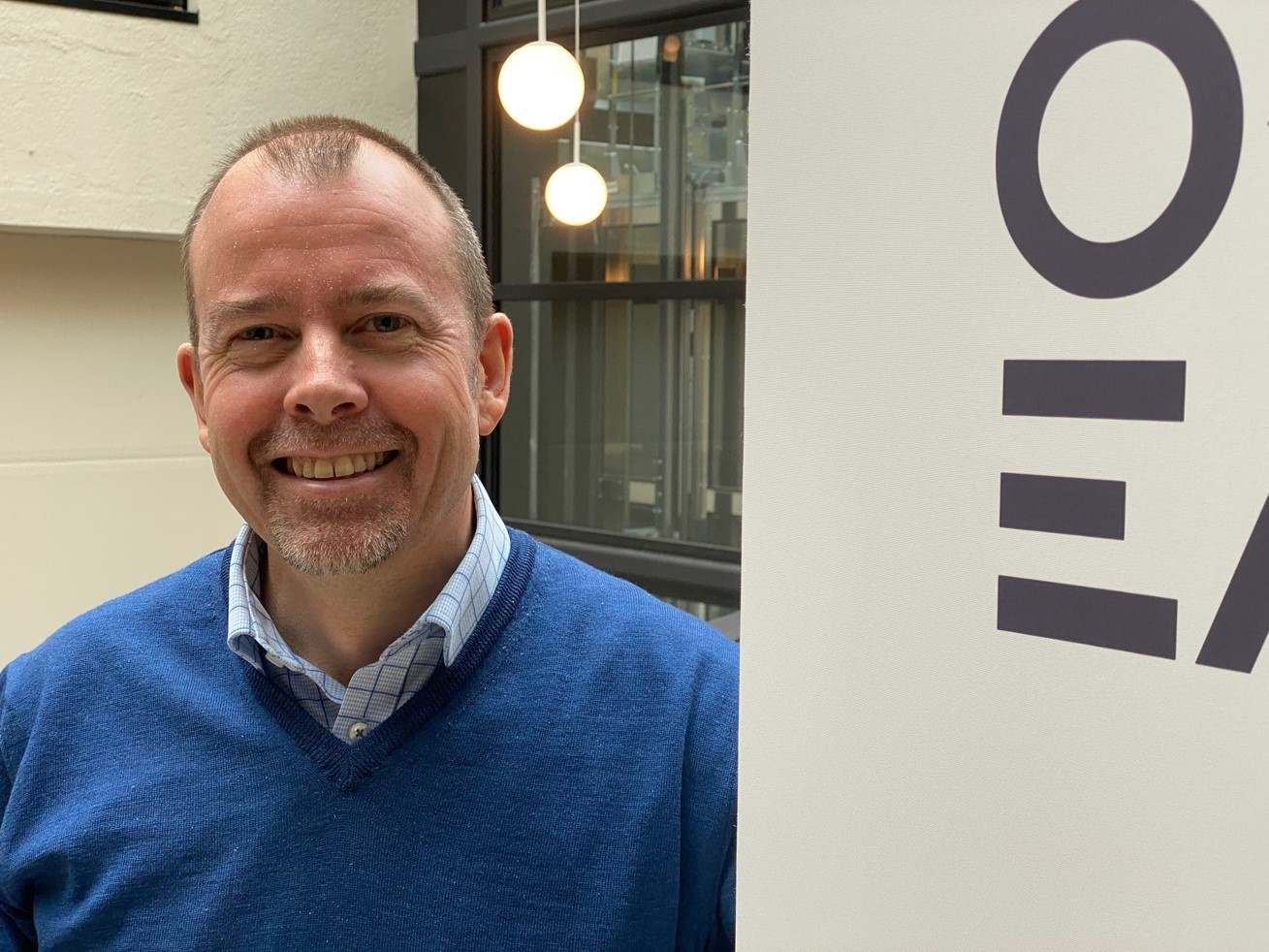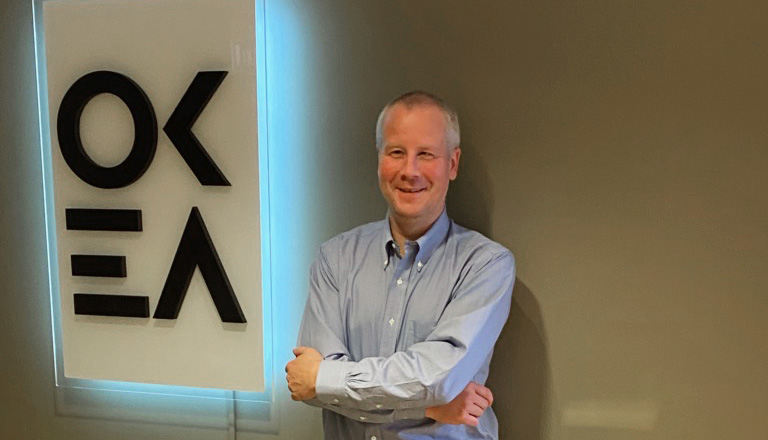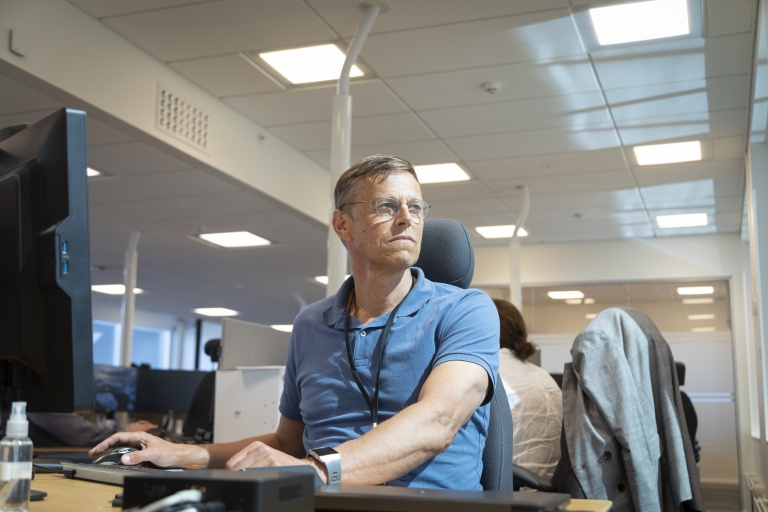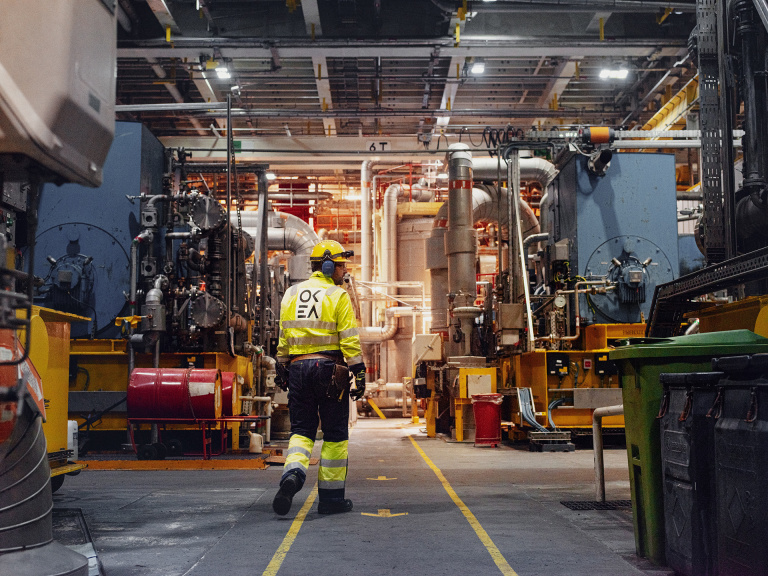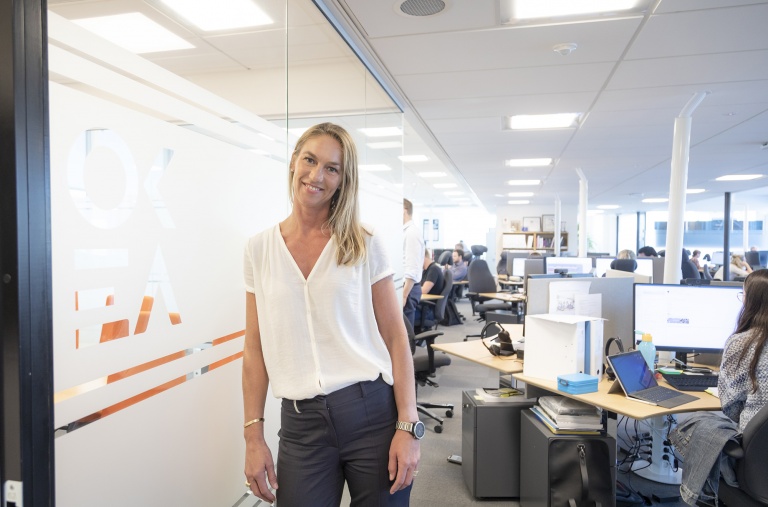One of OKEA’s focus areas is to explore in the Draugen area to find more oil and gas which can be brought to the platform to extend its operational life. Calypso is a prospect that can naturally be developed towards Draugen through the infrastructure that already exists in the area if a discovery is made.
Andrew McCann, director (SVP) for subsurface and wells at OKEA, has no doubt that this is a good licence to enter into. He refers to discovery successes on the west side of Draugen such as Galtvort, Hyme and Bauge, down towards Njord.
– It is natural for us as operator of Draugen to participate in exploration activities in the area. The Skumnisse well which we drilled on the east side of Draugen last year was a disappointment, but like all new data it will help us to explore the area further. On the other hand, we believe that the opportunities on the west side, where Calypso is located, are far greater. Given a discovery on Calypso, Draugen will be a competitive choice as host for development; there is already subsea infrastructure in the area that can be used. We want to get more resources into Draugen – there are also still opportunities within the Draugen license itself, and we are working hard to increase the recovery rate up to 70 percent. We want to extend the operation of Draugen until 2040, and maybe longer. We are far more eager than Shell was.
Unconventional
– OKEA is not a traditional exploration company, but we are still looking for opportunities that can support the producing fields and projects we have, and the new ones that we will focus on further through new discoveries. My team’s job is to find these and mature them in the early phase towards becoming a project (DG1). This applies to both the technical and the commercial aspects.
This is an area that has grown in the company over the past year. A lot of work has been done to develop a broader portfolio. In the Subsurface & Wells group, Andrew McCann has 16 permanent employees, but at the busiest, there may be over 50 people at work; OKEA hires in loyal partners when needed. McCann leads the entire subsurface work, whether it is support for the operations on Draugen, development of the Grevling area and other projects or follow-up of the reservoirs on Gjøa and Ivar Aasen, which others operate; exploration is part of many activities. He is also responsible for the drilling team.
– We have ambitions for growth, and I think we have taken some important steps to achieve that. It has been over two years since we took the big step with the purchase of Draugen and Gjøa. We must admit that after that it has been a bit too quiet around us when it comes to acquisition success, but in recent months we have taken action and bought OKEA into the Aurora discovery and now most recently into the Calypso licence.
Ambitious
He emphasizes that OKEA has always been ambitious in the annual applications for Awards in Predefined Areas (APA). That is the case also this autumn, and he is excited to see what the company will be awarded early next year. OKEA has major interests in the Grevling area as operator. There is exploration activity in the area that can contribute to the development of Grevling as a production hub. In the two previous APA rounds, OKEA was awarded licences in the area. Grevling alone has less than 50 million barrels and depends on more resources to be able to be developed. Therefore, it is important and exciting that drilling will take place on the Ilder oil prospect and the Jerv gas prospect early next year.
– We are a bit different from other companies in that we do not have a separate exploration department. We are not a “wild cat” company that focuses on higher-risk prospects in new areas, but rather in connection with our core areas. This also applies to acquisitions and applications for existing discoveries that other companies have not developed, often marginal projects. The purchase of Aurora, near Gjøa, is an example of this. We are also looking at old dry wells to see if there are opportunities that have been overlooked. This can give good results, but it can take time.
OKEA also looks at discoveries that are seen as “non-commercial”. The company believes that some of these can be developed with other, cheaper solutions. The temporary tax regime provides room to revive old “dead” discoveries. In this year’s APA round, licences with such discoveries have been applied for.
– We want a broader portfolio that provides more opportunities. Perhaps only a few of these can be developed, but it can still be cheaper and faster than drilling a lot of exploration wells.
McCann points out that there are over 200 discoveries on the Norwegian Continental Shelf that have not been developed. Most of these are non-commercial but nevertheless other companies hold on to many of them in licences.
– There may be various reasons for why they are sitting on such discoveries, but it cannot be good resource management. It is a strength of OKEA that our exploration projects have a direct link to development and production.
Wears his kilt on 17th May
It is a long way from his birthplace outside Glasgow, growing up in Essex, studying at Oxford, Imperial College and Cambridge – to Trondheim and OKEA. This may be due to his PhD degree in structural geology from research work on Svalbard. He is still a Scot who wears the kilt on 17th May, but after 23 years in Trondheim, he is almost a Trønder – with an accent.
McCann was quickly picked up by Statoil, although he had not planned to be so many years in the same company. First, he was at the research center at Rotvoll, after that he worked with large fields such as Heidrun, Tyrihans, Kristin and Njord. He rose through the ranks to be a head of petroleum technology. For four years from 2012, he held the same position in Brazil where Statoil operated the large Peregrino project. When he returned home, he became Statoil’s country manager for Libya, but he has yet to set foot in the country! He was in the management team for all the country managers in countries where Statoil (Equinor) has production but is not operator. There were many challenges with culture, geopolitics, and security.
– It was a period with a lot of learning around leadership, but also for me on a personal level. It opened up my views of the world and the industry. I learned a lot by dealing with a lot of people in different roles, from our own employees on the ground to ministers, ambassadors and the like.
– It was a bit of a transition to OKEA. What made you make such an exciting choice?
– There were two reasons for that. One was that I wanted to spend more time at home and was pretty tired of all the travel and when OKEA was looking for a leader for its subsurface activities, I was in no doubt. It is exciting to be part of something new, to be able to utilize my professional competence in a new environment and at the same time have the self-confidence to tackle the other parts of the job when you are in the management of a listed company. After the acquisition of Draugen, I definitely wanted to be part of the company’s future.
He says that he has been on a steep learning curve since joining the company in February 2019 with the IPO, falling oil and gas prices and the corona challenges.
– It is only now in the last few months that I feel that I have really managed to concentrate fully on the job I have, to find and mature the resources that will strengthen and support future projects in OKEA. It has also been exciting to get out of the “bubble” I have been in before, where I had more internal roles in Norway. Now I am out talking to people in other companies. After I came to OKEA I re-discovered that I have a network in the industry – it is a lot of fun.
He comes across as a calm and reflective leader. But he has another side when he is playing percussion and timpani, one of his hobbies. He has played for the St Olav play at Stiklestad, where the timpani are important. He also plays in brass and wind bands and symphony orchestras. At home in Persaunet, he and his partner have two children who also play the piano.
– I love to perform and will happily play a fanfare for our next success!
Subscribe
